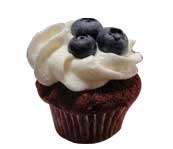TYPES OF FRUITS
Although most of
are found of
fruits and vegetables
and also welove to eat them, it would
be difficult to give a definition
for a fruit. In botanist term the
definition is easier; “a fruit
is a reproductive structure of an
angiosperm which develops from the
ovary and accessory tissue, which
surrounds and protects the seed”.
Fruits are important in the seed dispersal.
It does not matter what we may call
our nutritious dietary components,
in botany what constitutes a fruit
is quite straightforward, and this
lab looks at the structure and
classification
of fruits.
The process of fertilization could
carries both seed and fruit development.
While the seeds develop from ovules,
the ovary tissue undergoes a number
of series complex changes which result
in the development of the good and
fresh fruit. Many fruits are "fleshy"
and also contain sugars which attract
animals that then disperse the enclosed
seeds to the new locations. Other,
non-fleshy, fruits use other mechanisms
for seed dispersal.

 Dried
Fruits
Dried
Fruits
 Dried fruit is a fruit that has been
dried, either naturally or also through
use of a machine, such as a dehydrator.
Dried fruit is a fruit that has been
dried, either naturally or also through
use of a machine, such as a dehydrator.
 Raisins, plums or prunes and dates
are examples of excellent dried fruits.
Other fruits that may be good dried
include apples, apricots, bananas,
cranberries, figs, mangoes, pawpaw,
peaches, pineapples, pears and tomatoes.
Raisins, plums or prunes and dates
are examples of excellent dried fruits.
Other fruits that may be good dried
include apples, apricots, bananas,
cranberries, figs, mangoes, pawpaw,
peaches, pineapples, pears and tomatoes.
 A good Dried fruit has a long shelf
life and therefore it also can provide
a good alternate to fresh fruit, allowing
out of the season fruits to be available.
A good Dried fruit has a long shelf
life and therefore it also can provide
a good alternate to fresh fruit, allowing
out of the season fruits to be available.
 Drying is a very famous way to preserve
fruit in absence of the refrigeration.
Drying is a very famous way to preserve
fruit in absence of the refrigeration.
 Dried fruit is very often added to
baking mixes, breakfast cereals and
making cake.
Dried fruit is very often added to
baking mixes, breakfast cereals and
making cake.
 Dried fruit is always
being increasingly seen as a healthy
snack and since the public is prepared
to pay more for the snacks than staples,
the quality is improving all the time.
Dried fruit is always
being increasingly seen as a healthy
snack and since the public is prepared
to pay more for the snacks than staples,
the quality is improving all the time.
 Due to the water loss during the
dehydration, which may be as high
as 7 parts out of eight, dried fruit
has a stronger, more intense of flavor.
Due to the water loss during the
dehydration, which may be as high
as 7 parts out of eight, dried fruit
has a stronger, more intense of flavor.
 However the drying process destroys
most of the Vitamin C in the food,
hence that the dried version of the
fruit has always been only a fraction
of the levels of Vitamin C that would
exist in the fruit if it were fresh
and good.
However the drying process destroys
most of the Vitamin C in the food,
hence that the dried version of the
fruit has always been only a fraction
of the levels of Vitamin C that would
exist in the fruit if it were fresh
and good.
 Commercially prepared dried fruit
could contain sulfur dioxide which
could trigger asthma in individuals,
though dried fruit without sulfur
dioxide is also very much available,
particularly in good health stores.
Commercially prepared dried fruit
could contain sulfur dioxide which
could trigger asthma in individuals,
though dried fruit without sulfur
dioxide is also very much available,
particularly in good health stores.
 The sulfur is added to "fix"
the colour of the product. "Organic"
dried fruit is produced without sulfur
which could results in dark fruit
and the flavor is much more characteristic
of the fresh fruit.
The sulfur is added to "fix"
the colour of the product. "Organic"
dried fruit is produced without sulfur
which could results in dark fruit
and the flavor is much more characteristic
of the fresh fruit.
 The color of some
dry fruits can also be "fixed"
to an extent, with minimal impact
on the flavor, by treating the freshly
cut fruit with a preparation rich
in Vitamin C (e.g., a mixture of water
and lemon juice) for the few minutes
prior to drying.
The color of some
dry fruits can also be "fixed"
to an extent, with minimal impact
on the flavor, by treating the freshly
cut fruit with a preparation rich
in Vitamin C (e.g., a mixture of water
and lemon juice) for the few minutes
prior to drying.
 Fleshy
Multiple Fruits
Fleshy
Multiple Fruits
 Fleshy multiple fruit is formed from
a cluster of flowers called an inflorescence.
Each flower does produce a fruit,
but these mature into a single mass.
Examples are mulberry, pineapple,
and breadfruit.
Fleshy multiple fruit is formed from
a cluster of flowers called an inflorescence.
Each flower does produce a fruit,
but these mature into a single mass.
Examples are mulberry, pineapple,
and breadfruit.

![]() Dried
Fruits
Dried
Fruits![]() Fleshy
Simple Fruits
Fleshy
Simple Fruits![]() Fleshy Aggregate
Fruits
Fleshy Aggregate
Fruits![]() Fleshy
Multiple Fruits
Fleshy
Multiple Fruits














